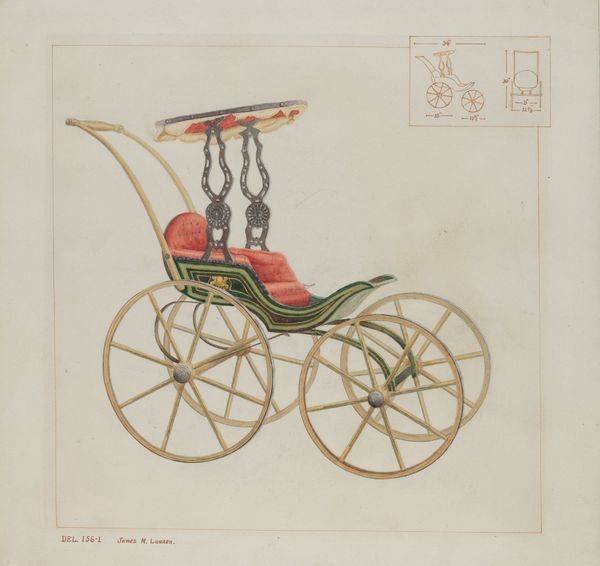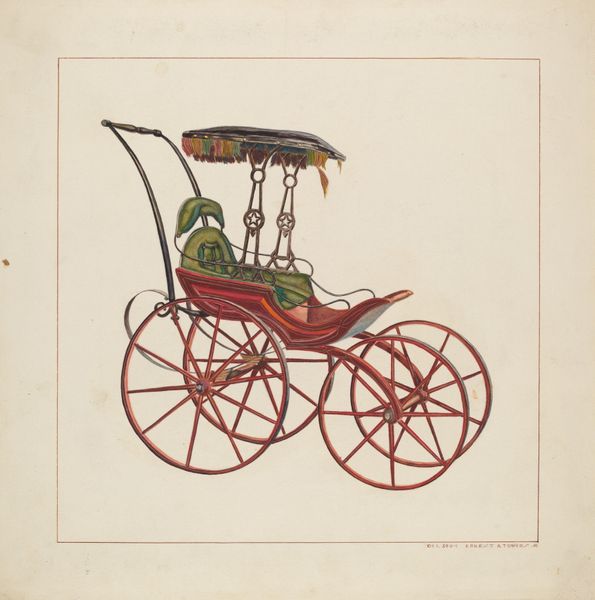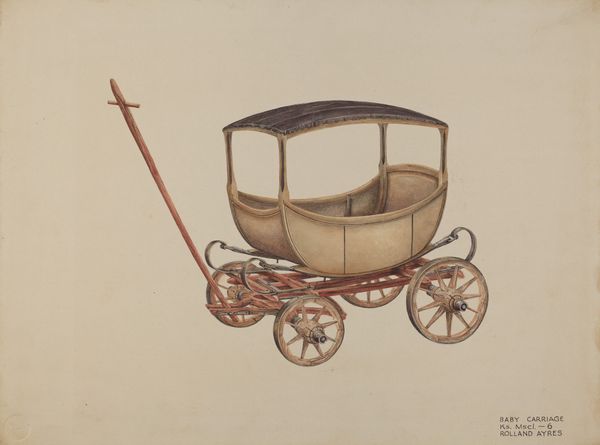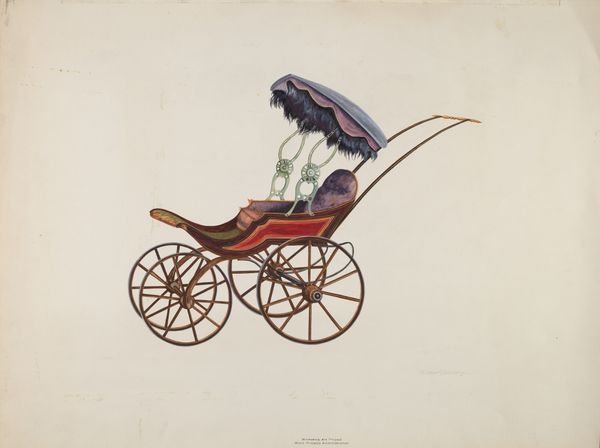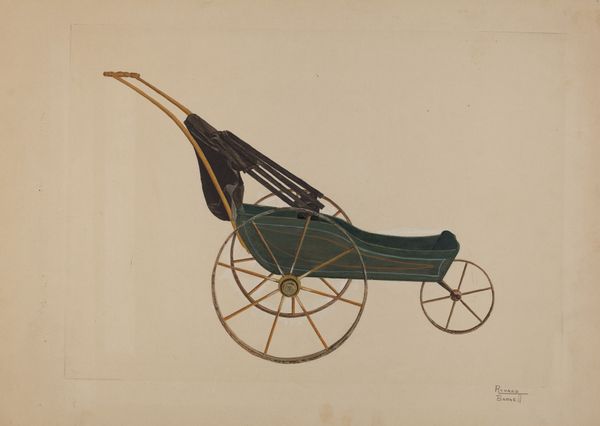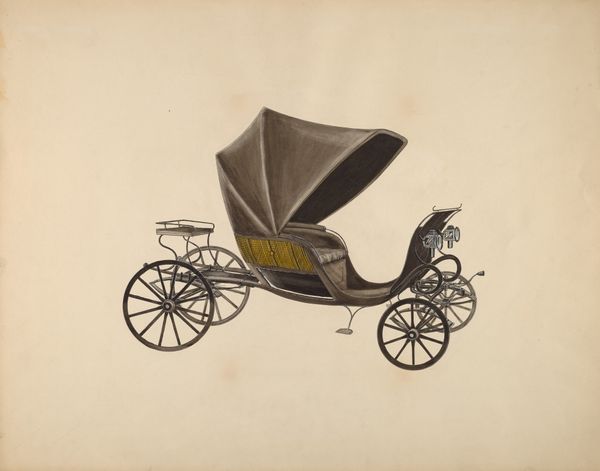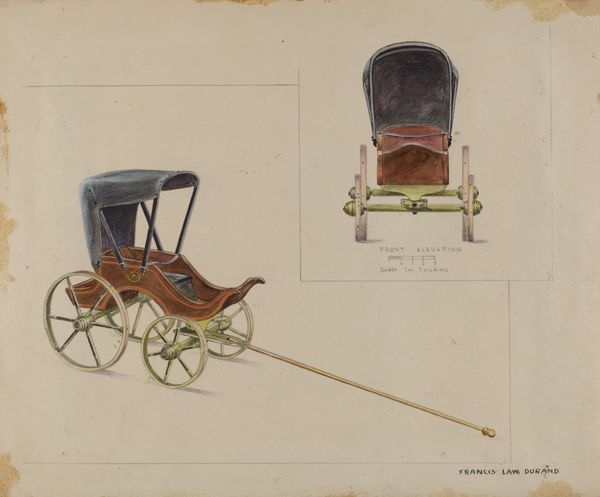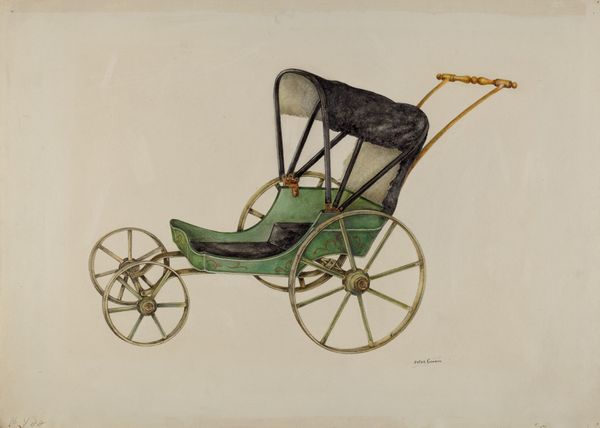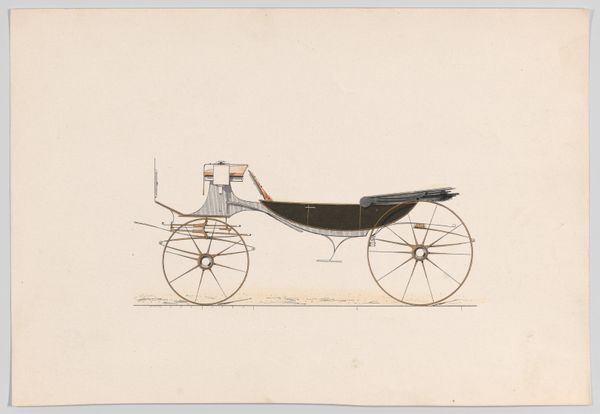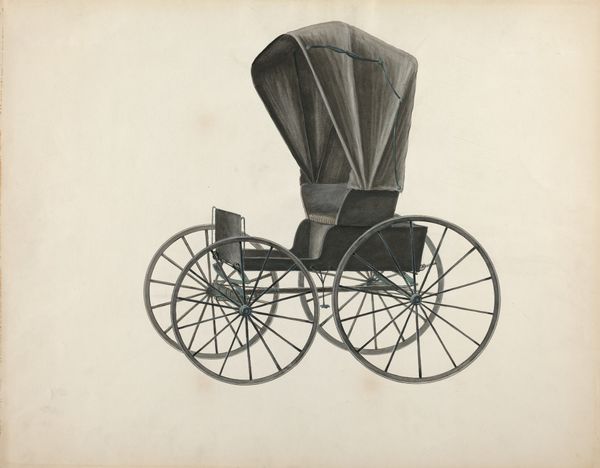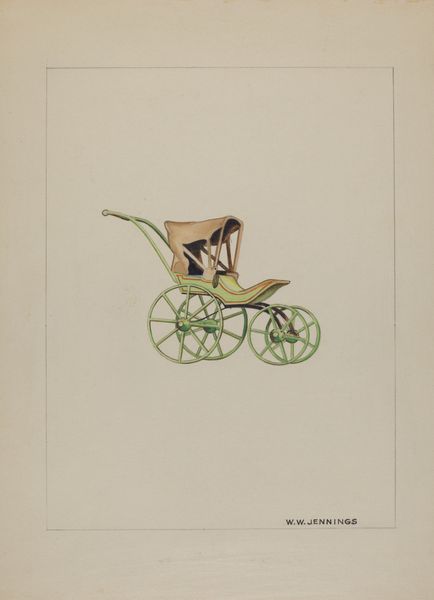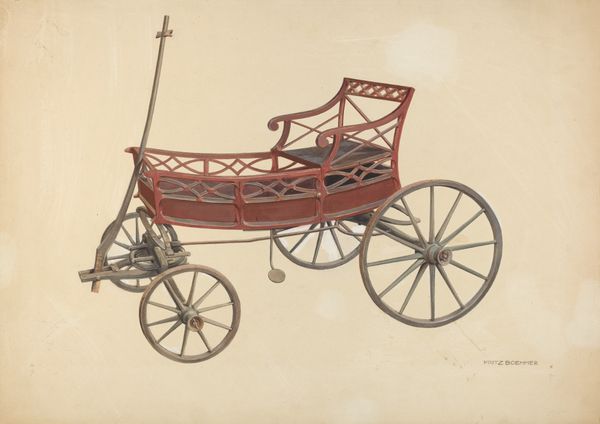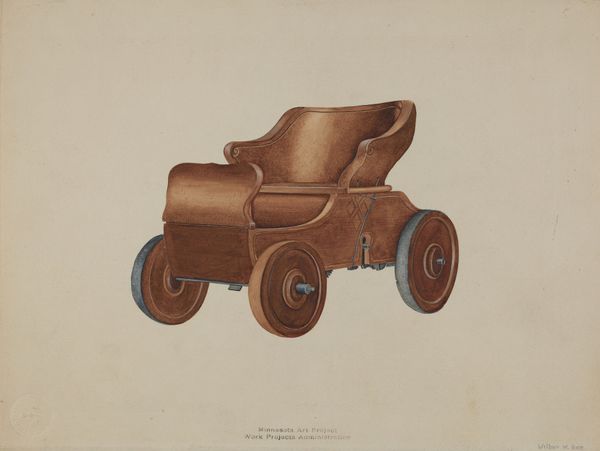
drawing, watercolor
#
drawing
#
toned paper
#
light pencil work
#
quirky sketch
#
pencil sketch
#
personal sketchbook
#
watercolor
#
underpainting
#
sketchbook drawing
#
watercolour illustration
#
sketchbook art
#
watercolor
Dimensions: overall: 30.5 x 30.4 cm (12 x 11 15/16 in.) Original IAD Object: 20" high; 38" long
Copyright: National Gallery of Art: CC0 1.0
Editor: So, this is Ernest A. Towers, Jr.'s "Doll Coach," circa 1937, a drawing using watercolor and pencil on toned paper. It’s quite a delicate image; the lines are soft and there's a real lightness to the subject. What do you see in this piece beyond the aesthetic appeal? Curator: This seemingly simple drawing allows us to explore a number of fascinating cultural intersections. A doll coach, first and foremost, is a powerful symbol of domesticity and gendered expectations. Consider the historical context: this was drawn in the late 1930s. What societal pressures do you think might be relevant to this image? Editor: Well, the Depression era was a period of significant economic hardship, placing new stresses on family structures and gender roles. Maybe this object signifies a longing for more traditional, stable times? Curator: Exactly. The doll carriage represents not just childhood innocence, but also the future role prescribed to young girls – motherhood. Think about the artist; a man creating an image associated with female domesticity. What does that signify to you? Editor: Maybe he is observing and critiquing these gendered expectations? Or, perhaps it is a sentimental reflection on his own childhood or the expectations placed upon his sisters or other women in his life? It's thought-provoking. Curator: Precisely. Moreover, consider who *owned* these doll coaches. Was it a privilege of wealthier families? This seemingly innocuous sketch invites us to consider questions of class, gender, and the performance of social roles. It’s not just a quaint image but an index of its time. Editor: I hadn’t considered those aspects. Seeing it now, the image seems so much more complex, almost unsettling in its implications. Curator: Art often holds multiple layers of meaning. Bringing these lenses of gender, class and history help us decode visual works.
Comments
No comments
Be the first to comment and join the conversation on the ultimate creative platform.
